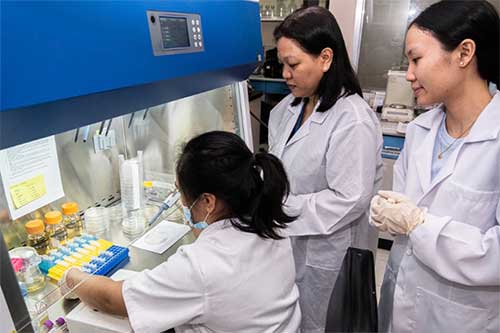
By Rizza B. Ramoran
With Acute Hepatopancreatic Necrosis Disease (AHPND) remaining a major threat to the shrimp industry, a research initiative is underway to understand Vibrio infections. This could lead to targeted strategies for managing bacterial outbreaks in shrimp farming.
AHPND outbreaks have been documented in several countries, including the Philippines. First recorded in the country in 2015, the disease has since spread nationwide. Globally, AHPND causes severe economic losses due to its virulence and rapid transmission. Recognized as a disease of global concern, it is listed as notifiable by the World Organization for Animal Health (WOAH).
Also known as Early Mortality Syndrome, AHPND can cause up to 100% mortality in shrimp within 20 to 30 days of stocking. This poses significant economic challenges, particularly for viral aquaculture species like the giant tiger prawn (Penaeus monodon) and whiteleg shrimp (P. vannamei).
To address this issue, the project “Role of Type VI Secretion System (T6SS) during Shrimp Infection of Vibrio spp.-causing AHPND” under the Manila Economic and Cultural Office-Taipei Economic and Cultural Office (MECO-TECO) Program aims to study the bacterial strains responsible for AHPND.
It focuses on how T6SS, a bacterial secretion system, contributes to shrimp infection. The project is funded by the Department of Science and Technology – Philippine Council for Agriculture, Aquatic and Natural Resources Research and Development (DOST-PCAARRD).
The project has made significant progress in identifying Vibrio strains responsible for AHPND. Researchers have completed genome sequencing of four strains: Vibrio parahaemolyticus PH1339 and PH1273, as well as Vibrio campbellii PH1401 and PH1409. These genetic blueprints provide crucial insights into bacterial behavior and evolution.
The team also conducted comparative genome and phylogenetic analysis to explore the link between AHPND and T6SS. According to the researchers, understanding this system could open new pathways for disease management.
Over the next three years, the project is expected to generate information that will aid in developing highly specific disease control measures for the aquaculture industry. (DOST-PCAARRD S&T Media Services)
















